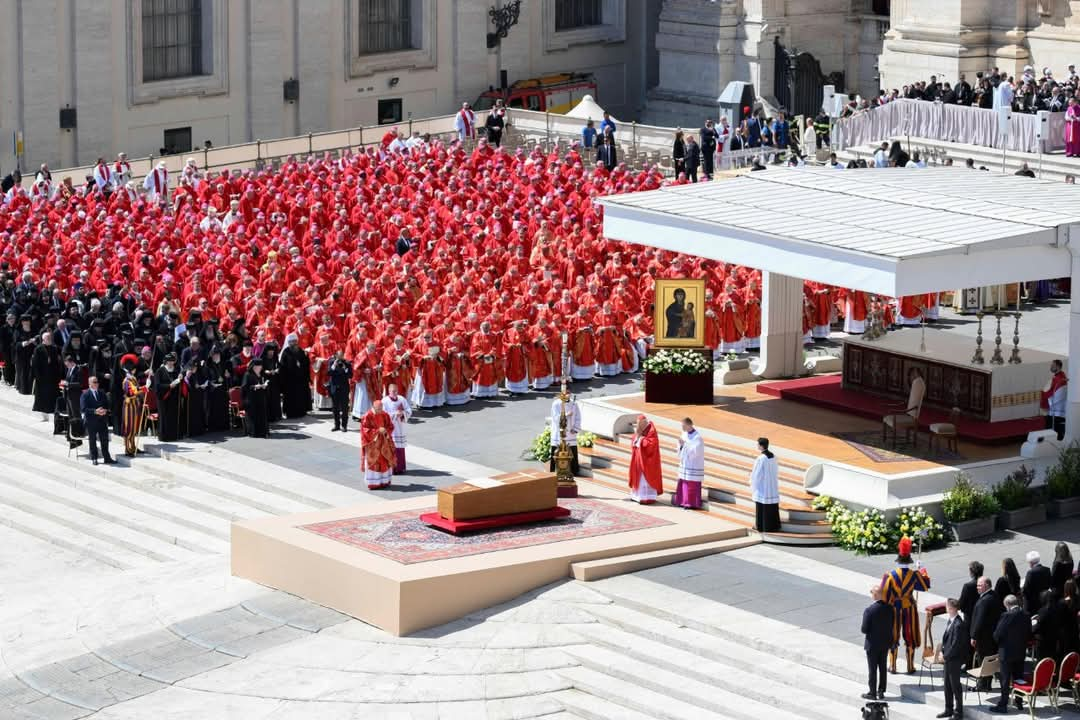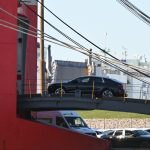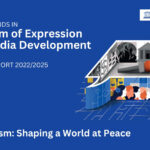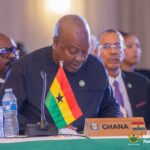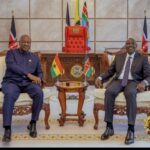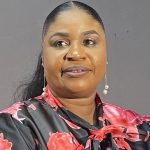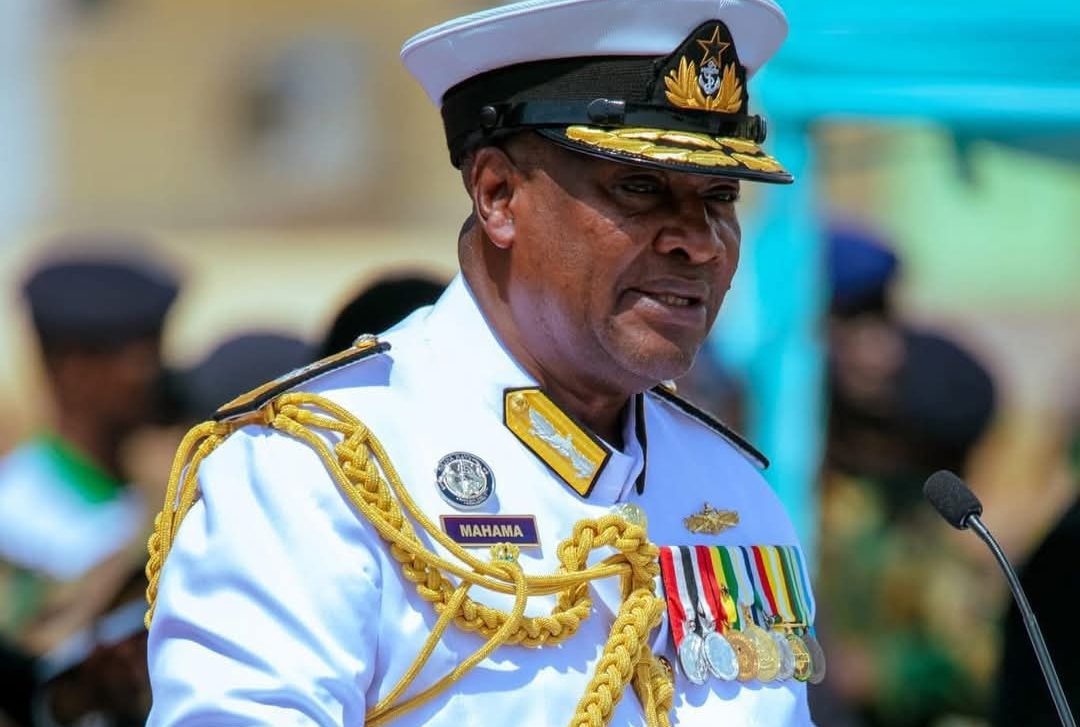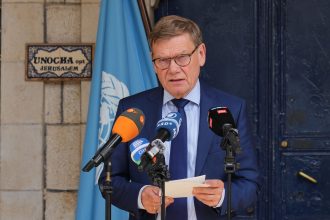Who Was Pope Francis?
Pope Francis served as the 266th pope of the Roman Catholic Church from March 2013 to April 2025. The first pope from the Americas, Francis took his papal title after Saint Francis of Assisi of Italy. Prior to his election as pope, he spent more than a decade as cardinal of the Roman Catholic Church of Argentina and archbishop of Buenos Aires. Francis was also president of the Bishops’ Conference of Argentina from 2005 to 2011. Named Person of the Year by Time magazine in 2013, Pope Francis’ tenure was characterized by humility and outspoken support of the world’s poor and marginalized people. He also advocated for peace and the protection of the environment. After months of declining health, Pope Francis died in April 2025 at age 88.
Quick Facts
FULL NAME: Jorge Mario Bergoglio
BORN: December 17, 1936
DIED: April 21, 2025
BIRTHPLACE: Buenos Aires, Argentina
ASTROLOGICAL SIGN: Sagittarius
Early Life and Education
Pope Francis was born Jorge Mario Bergoglio in Buenos Aires, Argentina, on December 17, 1936. His parents, Mario and Regina, were Italian immigrants.
A Guide to Pope Francis’ Family
As a young man, Bergoglio underwent surgery to remove part of one of his lungs due to a serious infection. He graduated from a technical school as a chemical technician before beginning training at the Diocesan Seminary of Villa Devoto. In March 1958, he entered the novitiate of the Society of Jesus.
Bergoglio taught literature and psychology at Immaculate Conception College in the Argentinian province of Santa Fé in 1964 and 1965. The next year, he taught the same subjects at the Colegio del Salvatore in Buenos Aires. He studied theology at the Colegio of San José from 1967 to 1970. After receiving a degree from the institution, he finished his doctoral thesis in theology in Freiburg, Germany, in 1986.
Priesthood
Pope Francis became a Roman Catholic priest in his early 30s.
Ordained as a priest in December 1969, Bergoglio began serving as Jesuit provincial of Argentina in 1973. He has said that initially, his mother didn’t support his decision to enter the priesthood despite the fact that she was a devout Catholic. By the time he was ordained, however, she accepted his calling and asked for his blessing at the end of his ordination ceremony. He later returned to the Colegio of San José, his alma mater, where he served as rector from 1980 to 1986 as well as a professor of theology.
On May 20, 1992, Bergoglio was named titular bishop of Auca and auxiliary of Buenos Aires; he was ordained into that post a week later. In February 1998, he became archbishop of Buenos Aires, succeeding Antonio Quarracino. Three years later, in February 2001, he was elevated to cardinal by Pope John Paul II and named the cardinal-priest of Saint Robert Bellarmino. He served as president of the Bishops’ Conference of Argentina from 2005 until 2011.
After Pope John Paul II’s death in April 2005, Bergoglio reportedly received the second-most votes in the ensuing papal conclave. However, Pope Benedict XVI was chosen as Pope John Paul’s successor.
On March 13, 2013, at the age of 76, Bergoglio was named the 266th pope of the Roman Catholic Church. The new pontiff adopted the name Pope Francis after Saint Francis of Assisi of Italy. He was the first citizen from the Americas, the first South American, and the first Jesuit priest to be named pope. Prior to the 2013 papal conclave, Pope Francis had served as both cardinal and archbishop for more than 12 years.
The tone of his papacy, which was admired globally, was established long before his elevation to the church’s highest position; however, when he was named to that post, the media quickly picked up on stories of his humility. News circulated about the fact that he returned to the boarding house where he had been staying to pay his bill personally, rather than send an assistant, and that he would choose to live in a simple two-room apartment rather than the luxurious papal accommodations in the Vatican’s Apostolic Palace. In choosing to live more simply, Pope Francis broke a tradition that had been upheld by popes for more than a century.
Addressing a crowd of tens of thousands in Saint Peter’s Square in the Vatican City after his selection by the conclave, Pope Francis stated: “As you know, the duty of the conclave was to appoint a bishop of Rome. It seems to me that my brother cardinals have chosen one who is from faraway… Here I am. I would like to thank you for your embrace.”
Mother Teresa
Joan of Arc
After the results of the 2013 papal conclave were announced, then–U.S. President Barack Obama issued a statement about the new pope: “As the first pope from the Americas, his selection also speaks to the strength and vitality of a region that is increasingly shaping our world, and alongside millions of Hispanic Americans, those of us in the United States share the joy of this historic day.”
It wasn’t long after assuming the papacy that Pope Francis began offering more nuanced views and interpretations on key social issues about which the church holds pronounced doctrinal views. He didn’t shy away from elaborating on those views, and sound bites such as “Who am I to judge?”—a comment he made referring to homosexuality—served to portray him as a compassionate conservative whose views are often considered progressive compared to those of his predecessors.
First International Visit as Pope
Pope Francis made his first international visit on July 22, 2013, when he arrived at the Galeão-Antonio Carlos Jobim International Airport in Rio de Janeiro. There, he was greeted by Brazilian President Dilma Rousseff in a welcome ceremony and later circulated in downtown Rio in order to be “close to the people.”
While in Brazil, Pope Francis was on hand to celebrate World Youth Day. More than three million people attended the pontiff’s closing mass at the event. On his way back to Rome, Pope Francis surprised reporters traveling with him about his seemingly open stance on gay Catholics. According to The New York Times, he told the press: “If someone is gay and he searches for the Lord and has good will, who am I to judge?” His remarks were heralded by several gay and lesbian groups as a welcoming gesture by the Roman Catholic Church.
Spiritual and World Leadership
In September 2013, Pope Francis called for others to join him in praying for peace in Syria. The pontiff held a special vigil in Saint Peter’s Square on September 7, which was attended by an estimated 100,000 people. According to the Catholic News Service, Francis told the crowd: “When man thinks only of himself… [and] permits himself to be captivated by the idols of dominion and power…, [t]hen the door opens to violence, indifference, and conflict.”
The pope implored those involved in the conflict to find a peaceful solution. “Leave behind the self-interest that hardens your heart, overcome the indifference that makes your heart insensitive towards others, conquer your deadly reasoning, and open yourself to dialogue and reconciliation,” he said.
Later that month, Pope Francis gave a revealing interview to an Italian Jesuit publication called La Civiltà Cattolica. He explained that religious dialogue must be broader in scope, not simply focused on such issues as homosexuality and abortion. “We have to find a new balance; otherwise, even the moral edifice of the church is likely to fall like a house of cards, losing the freshness and fragrance of the Gospel,” the pope said. “The proposal of the Gospel must be more simple, profound, radiant. It is from this proposition that the moral consequences then flow.”
While he didn’t believe women should be ordained as priests, Francis considered women an essential part of the church. “The feminine genius is needed wherever we make important decisions,” he said. He also continued to present a more accepting attitude toward homosexuality than previous pontiffs, saying that “God in creation has set us free: it is not possible to interfere spiritually in the life of a person,” according to The Guardian.
In early December 2013, Pope Francis gave an “apostolic exhortation,” an address calling for big changes in the Catholic Church, including rethinking long-held but antiquated customs. “I prefer a Church which is bruised, hurting, and dirty because it has been out on the streets, rather than a Church which is unhealthy from being confined and from clinging to its own security,” he stated. “I do not want a Church concerned with being at the center and then ends by being caught up in a web of obsessions and procedures.”
Also in December 2013, Pope Francis was named Person of the Year by Time magazine. Pope Francis—having joined the ranks of Pope John Paul II and Pope John XXIII, the only other popes to be awarded the title in 1994 and 1963, respectively—was a contender against other prominent figures of the year, including NSA whistleblower Edward Snowden, Senator Ted Cruz, Syrian President Bashar al-Assad, and LGBTQ activist Edith Windsor. In the article, it was revealed that the deciding factor that led to Pope Francis landing at the top of the list was his ability to alter the minds of so many people who had given up on the Catholic Church in such a short period of time.
The following March, it was announced that Pope Francis had been nominated for the 2014 Nobel Peace Prize. He didn’t receive this honor, but he continued to devote his time to reach out to Catholics around the world. During that summer, Pope Francis went on his first visit to Asia. He spent five days in South Korea in August.
On his return trip from South Korea, Pope Francis discussed his own mortality with the press. “Two or three years and then I’ll be off to my father’s house,” he said, according to a report in The Guardian. He also suffered a personal loss around that same time after several members of his family were killed in a car accident in Argentina.
Progressive Stances
In fall 2014, Pope Francis showed himself to be progressive on several scientific issues. He told the members of the Pontifical Academy of Sciences that he supported the Big Bang theory and evolution. According to The Independent newspaper, Pope Francis said that “The Big Bang, which today we hold to be the origin of the world, does not contradict the intervention of the divine creator but, rather, requires it.” He also said that evolution “is not inconsistent with the notion of creation.”
Throughout late 2014 and into 2015, Pope Francis continued his pattern of deep engagement with both political and environmental conflicts around the world. He spoke out against global abuses and the misuse of political and economic power, lamenting the disappearances and suspected murders of 43 students in Mexico; the dangers and losses of life caused by immigration; financial mismanagement within the church itself; and sexual abuse. His decision to crack down on church corruption and excommunicate members of the Mafia were hailed by Catholics and non-Catholics alike, though they also caused him to receive death threats.
The pope tackled other political blockades too, bringing together Cuban President Raul Castro and U.S. President Barack Obama in a historic meeting that precipitated significant foreign policy changes. Finally, his ambitious schedule of travel continued—with visits to Paraguay, Bolivia, and Ecuador—along with his beatifications. During his tenure, Francis beatified more than three dozen people, including Óscar Romero, a priest from El Salvador who was assassinated in 1980 because of his espousal of liberation theology and his activism to protect marginalized people. He also canonized more than 925 saints, setting a record for a single pope, and approved the canonization of the first millennial saint.
In September 2015, Pope Francis continued to stir up the status quo in the Catholic Church when he announced that priests around the world will be allowed to forgive the “sin of abortion” during a “year of mercy,” which started in early December 2015. The pope wrote about this act of compassion in a letter, stating: “I think in particular of all the women who have resorted to abortion. I am well aware of the pressure that has led them to this decision. I know that it is an existential and moral ordeal. I have met so many women who bear in their heart the scar of this agonizing and painful decision. What has happened is profoundly unjust; yet only understanding the truth of it can enable one not to lose hope.”
He added: “The forgiveness of God cannot be denied to one who has repented, especially when that person approaches the Sacrament of Confession with a sincere heart in order to obtain reconciliation with the Father. For this reason, too, I have decided, notwithstanding anything to the contrary, to concede to all priests for the Jubilee Year the discretion to absolve of the sin of abortion those who have procured it and who, with contrite heart, seek forgiveness for it.”
On November 21, 2016, as the Jubilee Year of Mercy ended, the Vatican announced that the pope had extended the dispensation to all priests to absolve “the grave sin” of abortion. The policy was documented in an apostolic letter written by the pope, which stated:
“I henceforth grant to all priests, in virtue of their ministry, the faculty to absolve those who have committed the sin of procured abortion. The provision I had made in this regard, limited to the duration of the Extraordinary Holy Year, is hereby extended, notwithstanding anything to the contrary. I wish to restate as firmly as I can that abortion is a grave sin, since it puts an end to an innocent life. In the same way, however, I can and must state that there is no sin that God’s mercy cannot reach and wipe away when it finds a repentant heart seeking to be reconciled with the Father. May every priest, therefore, be a guide, support and comfort to penitents on this journey of special reconciliation.”
In November 2017, Pope Francis visited Myanmar amid a humanitarian crisis that had sparked the exodus of more than 600,000 Rohingya Muslims from the country. The pope first met with powerful military General Min Aung Hlaing, who refuted reports of ethnic cleansing by claiming there was “no religious discrimination in Myanmar.” He then made a joint appearance with State Counsellor Aung San Suu Kyi to deliver a highly anticipated speech in which he called for tolerance but avoided the term “Rohingya” and stopped short of condemning the persecution, drawing criticism from those who wanted to see a more forceful stance. The pope also met with other religious leaders, after which he headed to Bangladesh to show support for Rohingya refugees.
During a television interview in early December 2017, Pope Francis suggested a small but meaningful change to “Our Father,” commonly known as the “Lord’s Prayer.” One line in the prayer had been recited for generations in English as “lead us not into temptation,” but the pope said that was “not a good translation,” pointing out the French Catholic translation, “do not let us fall into temptation,” as a more appropriate alternative.
After expressing support of breastfeeding in public during the annual Holy Mass on the Feast of the Baptism of the Lord in 2017, the pope made similar comments during the 2018 ceremony. Noting how one baby crying would spark others to follow suit, he said that if the babies in attendance were “starting a concert” of crying because they were hungry, then mothers should feel free to feed them right there as part of the “language of love.”
In August 2018, the Vatican announced that Pope Francis had approved a change to the Catechism of the Catholic Church that now considers the death penalty “inadmissible because it is an attack on the inviolability and dignity of the person.” The church explained the new policy as an “evolution” of the previous doctrine, which allowed consideration of capital punishment if it were “the only possible way of effectively defending human lives against the unjust aggressor.” The pope had previously spoken out against the death penalty, saying it violated the Gospel.
Not all of the pope’s decisions were designed to bring about change: A papal letter made public in February 2020 revealed his rejection of a proposal to allow the ordination of married men in remote areas underserved by priests, an outcome that pleased Catholic conservatives who worried about the weakening of church traditions.
In October 2020, Pope Francis expressed his support for same-sex civil unions as seen in the documentary Francisco. “What we have to create is a civil union law. That way they are legally covered,” Francis said in the documentary. Three years later, he approved another major shift in the faith by granting Catholic priests’ permission to bless same-sex couples as long as they don’t sanctify the marriage itself.
Environmental Activism
In June 2015, Pope Francis spoke out about the environment. He released a 184-page encyclical, a type of Papal message, warning of the dangers of climate change. In this letter, entitled “Laudato Si,” Pope Francis wrote: “If present trends continue, this century may well witness extraordinary climate change and an unprecedented destruction of ecosystems, with serious consequences for all of us.”
Pope Francis chided world leaders for failing to “reach truly meaningful and effective global agreements on the environment.” He also called for “highly polluting fossil fuels” to be “progressively replaced without delay.” And while improving and protecting the environment will be difficult, the situation wasn’t hopeless, according to Pope Francis. “Human beings, while capable of the worst, are also capable of rising above themselves, choosing again what is good, and making a new start.” The encyclical was considered significant by environmentalists and church observers alike because it was not directed exclusively to Catholics but to everyone in the world.
Declining Health and Death
Pope Francis was hospitalized for various health conditions toward the end of his life. In 2023, he underwent hernia surgery in June and spent three days in the hospital that March for bronchitis.
In February 2025, the pope, who had part of one lung removed as a young adult, was rushed to the hospital for another bout of bronchitis, which quickly developed into a respiratory tract infection and pneumonia in both of his lungs. After experiencing an “asthma-like respiratory crisis,” he was given supplemental oxygen to aid his breathing. His blood tests revealed that he also had mild kidney disease. The Vatican said the leader of the Catholic Church was in critical but stable condition at the time.
After a five-week stay, Pope Francis was discharged from the hospital in late March 2025. On his way back to Vatican City, he stopped to make his first public appearance in over a month at Rome’s Papal Basilica. The pope’s doctors said he had two near-death experiences while hospitalized but remained stable for two weeks prior his release.
Pope Francis died a month later on April 21, 2025, in Vatican City. He was 88 and had just delivered an address for Easter Sunday the day prior. Before his death, he requested pared down funeral rites, aligning with his lifelong humility. He also requested to be buried at the Rome’s Basilica of Saint Mary Major, not in the Vatican like other popes, so that he would be closer to his favorite icon of the Madonna.
Source: Biography.com

